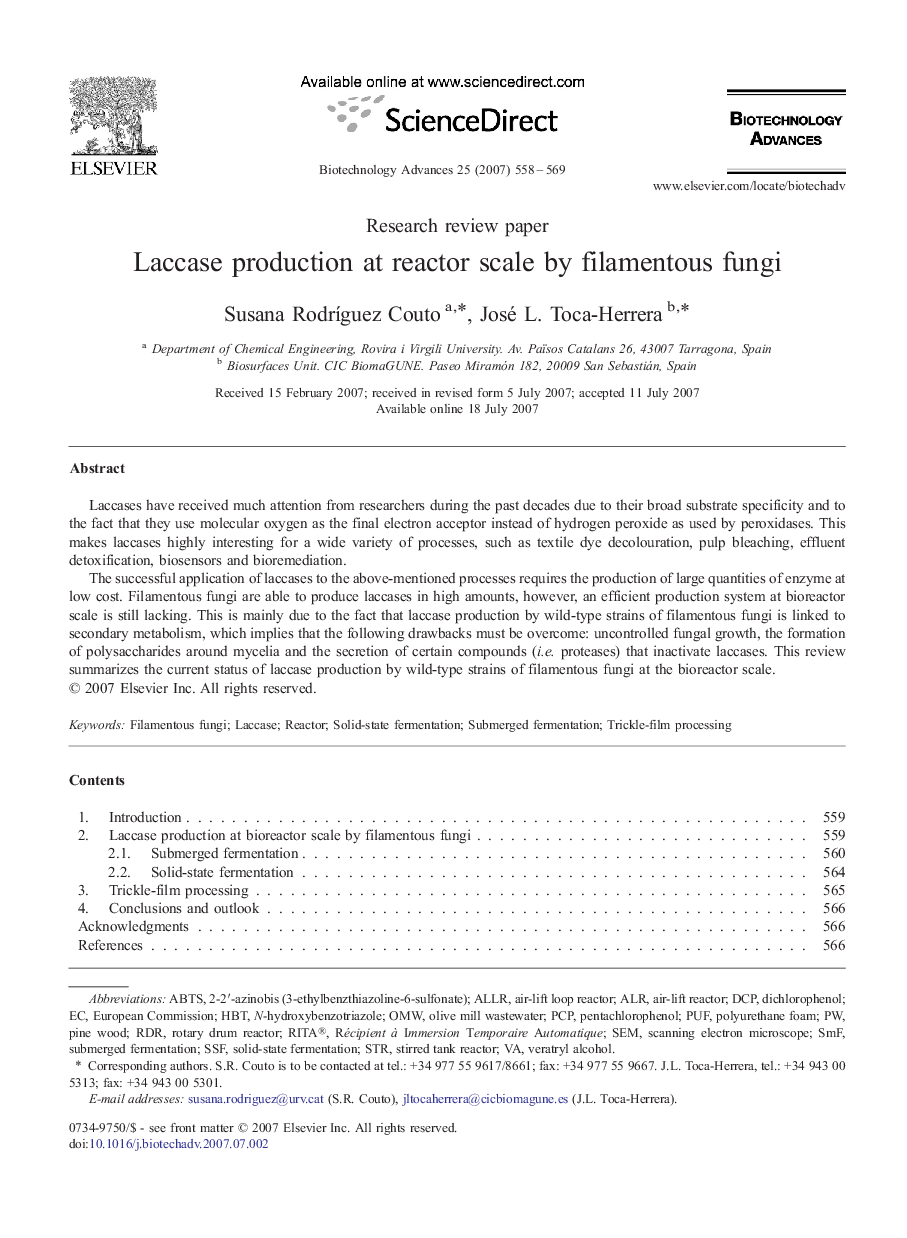| Article ID | Journal | Published Year | Pages | File Type |
|---|---|---|---|---|
| 14558 | Biotechnology Advances | 2007 | 12 Pages |
Laccases have received much attention from researchers during the past decades due to their broad substrate specificity and to the fact that they use molecular oxygen as the final electron acceptor instead of hydrogen peroxide as used by peroxidases. This makes laccases highly interesting for a wide variety of processes, such as textile dye decolouration, pulp bleaching, effluent detoxification, biosensors and bioremediation.The successful application of laccases to the above-mentioned processes requires the production of large quantities of enzyme at low cost. Filamentous fungi are able to produce laccases in high amounts, however, an efficient production system at bioreactor scale is still lacking. This is mainly due to the fact that laccase production by wild-type strains of filamentous fungi is linked to secondary metabolism, which implies that the following drawbacks must be overcome: uncontrolled fungal growth, the formation of polysaccharides around mycelia and the secretion of certain compounds (i.e. proteases) that inactivate laccases. This review summarizes the current status of laccase production by wild-type strains of filamentous fungi at the bioreactor scale.
